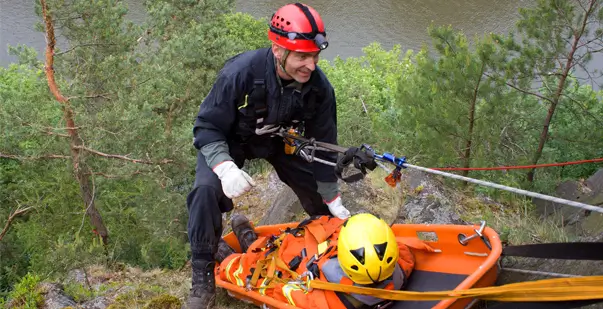Emergencies can be scary and overwhelming, especially when it comes to rescue situations. In this blog, you will read about common mistakes in CPR to avoid during a rescue situation. Whether you’re in a natural disaster, a car accident, or any other situation – someone’s life may be at risk. It’s important to know what to do and what not to do to stay safe and help those in need. So, let’s dive in and explore some important tips and tricks for handling rescue situations like a pro!
To begin with, learning CPR will be helpful. It’s a slightly technical yet a must-have skill for all. You can save someone’s life by performing CPR right away. American HealthCare Academy offers an online CPR certification course that’s free of charge and comes with a money-back guarantee. All the modules are 100% virtual and taught by highly trained OSHA-certified instructors. All you need is an internet connection and a laptop, tablet or phone. You earn CE credit points after completing the course. You can start learning anywhere and anytime. Register now and be a smart citizen!
What are the most common mistakes in CPR?
It’s crucial to know the correct way of performing CPR, as any mistake can potentially cause more harm than good and result in complications of CPR. Here are some of the most common mistakes in CPR that people make:
1. Not calling for emergency help
CPR is only a temporary measure that keeps the blood circulating until professional help arrives. It’s essential to call for emergency help immediately after performing CPR.
2. Incorrect hand placement
When performing CPR, it’s crucial to place your hands correctly. The hands should be placed on the center of the chest, between the nipples, with the fingers interlaced. Wrong hand placement can be the reason why CPR may fail.
3. Not compressing hard enough
Effective chest compressions should be firm and deep, with a depth of at least two inches. Many people make the mistake of not compressing hard enough, which reduces the effectiveness of CPR.
4. Too fast or too slow chest compressions
The recommended rate of chest compressions is between 100-120 compressions per minute. Going too fast or too slow can decrease the chances of successful resuscitation.
5. Not allowing the chest to fully recoil
After each compression, it’s essential to allow the chest to fully recoil. Failing to do so can reduce the effectiveness of CPR.
6. Not tilting the head back enough
When performing CPR on an adult, it’s essential to tilt the head back enough to open the airway. If the head is not tilted back enough, the airway may remain blocked, reducing the effectiveness of CPR.
Get Certified with Our Online CPR Certification Course?
Learn CPR skills that make a real difference.
How to avoid these mistakes in CPR?
Here are some tips to avoid common mistakes while performing CPR:
1. Call for emergency help
Before starting CPR, call for emergency help. Emergency services can provide professional medical assistance that can be crucial to the patient’s survival.
2. Check the airway
Ensure that the patient’s airway is clear of any obstruction, such as food or vomit, that may block the airway. Tilt the patient’s head back slightly to open the airway.
3. Check for breathing
Check if the patient is breathing by placing your ear near their mouth and nose. If you see that the victim is not breathing, start performing CPR there and then.
4. Position your hands correctly
Position your hands correctly on the patient’s chest. Place the heel of your hand on the center of the chest, between the nipples, and interlace your fingers.
5. Apply enough pressure
Apply enough pressure to compress the chest at least two inches deep. This pressure helps pump blood through the body and to the brain.
6. Perform compressions at the right rate
Compressions must be performed at a consistent rate of 100-120 compressions/minute. This rate helps maintain blood flow to the body and the brain.
7. Allow the chest to fully recoil
Let the chest fully retreat after each compression. This allows the heart to refill with blood before the next compression.
8. Minimize interruptions
Minimize interruptions during CPR to maintain the momentum of the compressions.
9. Don’t stop until help arrives
Keep performing CPR until professional help arrives. Stopping CPR prematurely can reduce the chances of successful resuscitation.
Conclusion
By learning from these mistakes, we can all be better prepared to handle emergencies and potentially save lives. Enroll with us and learn the right technique to give CPR. Rest assured that your efforts won’t go in vain. Give us a call at 1-888-277-7865.









